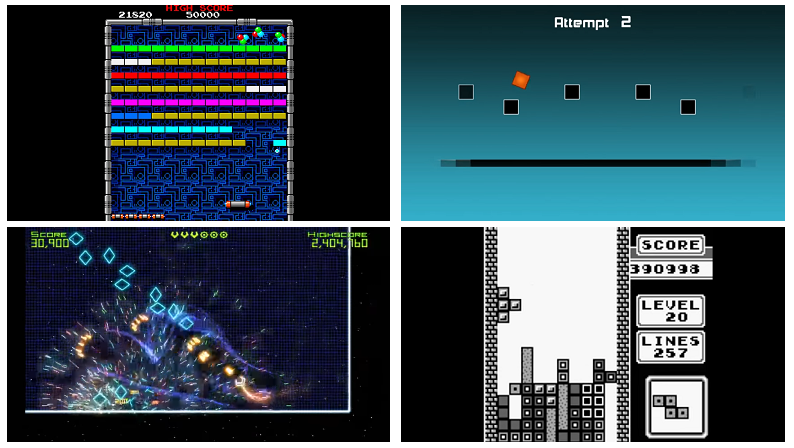Story is more important than Gameplay
There’s been an undercurrent bubbling under gaming for close to a decade now, and while I had always assumed it to be a minority view (still do), it’s one that seems to be gaining ground in the world of twitter hot-takes, and that is the absurd idea that Story is more important in a videogame than Gameplay. That is mental. Story, more important than GAMEplay? Sorry, wrong.

It is very easy to create a game without a story; take Super Hexagon for example, the game doesn’t even try to provide any form of context or reasoning just flashing lights, a killer soundtrack and shapes. On the other hand, making a game without gameplay would be like writing a book without words, or filming a movie without making use of the visible light spectrum (“Book from the Ground” by Xu Bing may have already accomplished the former, but I doubt there’s the market for “Infrared Film for Fishes”). The “game” part of a game is a fundamental building block, and must therefore be more important.
A common strawman you’ll come up against when defending this position is shown below (incidently, this tweet is was inspired me to respond here, so congratulations on dragging me down to your level, random internet moron).

As you can plainly tell, this person has clearly never actually played a videogame before (unless we’re counting the loosely cobbled together bundles of QTEs and voyeuristic Ellen Page erotica that David Cage chunders up as “games”). If they had even a passing familiarity with the medium, they would have heard of Pong, the first commercially successful arcade game, and the reason the industry has even lasted long enough to have this discussion.
Note the two fallacies in their argument. The first, that nobody would play a game about cubes, is provably false, but the second is more insidious. The point they appear to be trying to make with the “grey cubes” comment is that any form of visual detail can be considered a story. If colouring a block green is the bar we have set for great works of fiction then we as a culture are doomed.

Even going beyond such abstract examples, and into realistic depictions of people, places and things, let’s take the first Tony Hawk’s Pro Skater as an example. It has people, places, and activities, but no story to speak of. You go down a ramp, do some tricks, grab some collectibles, and then, 2 minutes later, the timer runs out and the level ends. That’s it. There isn’t even an actual “end” to each level you have to reach, which could (at the world’s biggest stretch) be used to describe the level as a “journey” with a beginning, middle, and destination. Having recognisable visual elements brings the game no closer to being a narrative than a three-course meal.
While indeed it’s true that this Story > Gameplay idiocy has become more prevalent in recent times, with it even being recently debated by Yahtzee Crowshaw and Jack Packard↗, this line of “thinking” can be traced back at least 2008, with designer Michael Samyn (Sunset) providing insights such as:
“They don't realize that the most interesting aspect of their design is the way in which they express the story: through the environment, the animations, the color, the lighting, etc.”
and more tellingly:
“As much as the game structure protects the player from experiencing the story, does it constrain developers within the confines of triviality, of toys?”
Which I think explains this whole topic fairly well: A bunch of pretentious wankers making up excuses for why their games are now a “Big Boy Hobby” and should be treat as totally mature now. And to that I say: *Blows Raspberry noises*
«Back to "Rants"»
